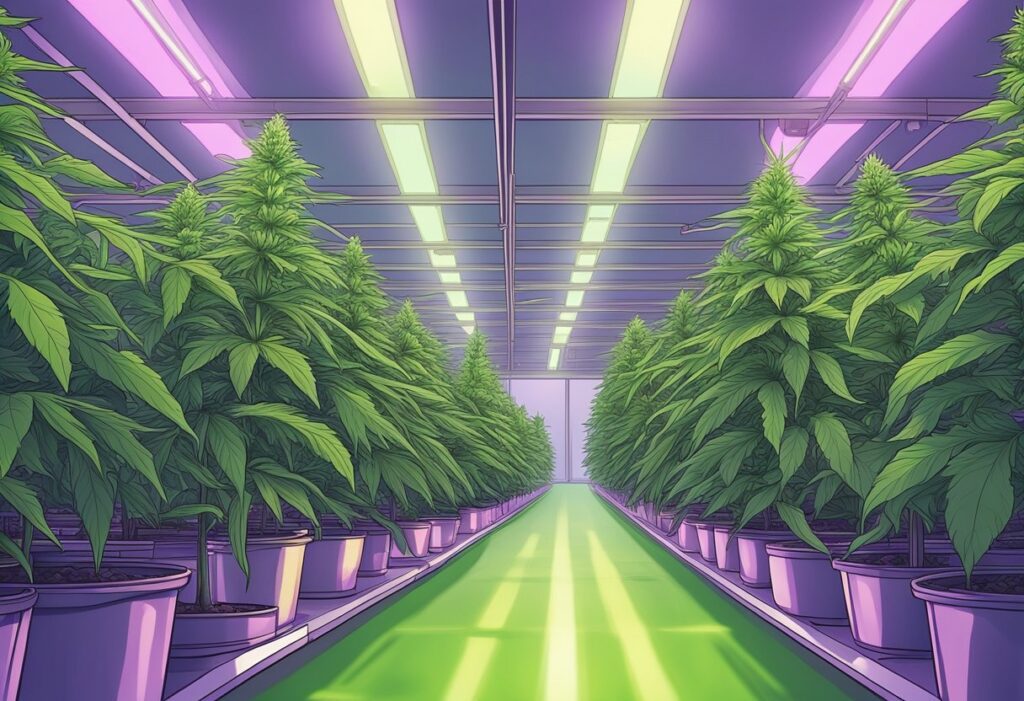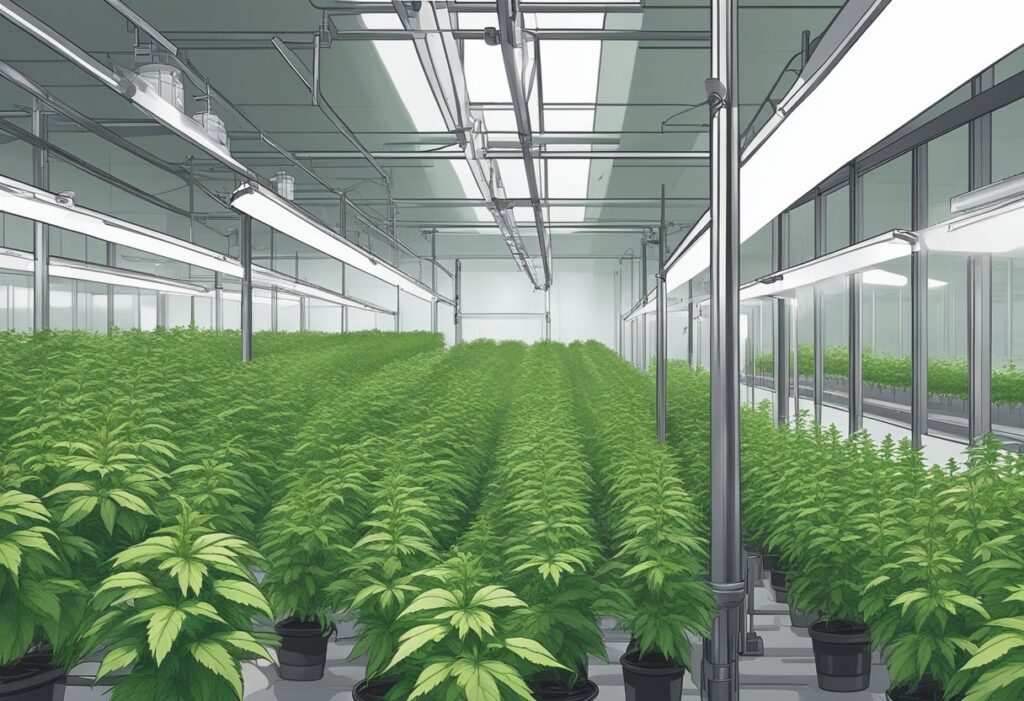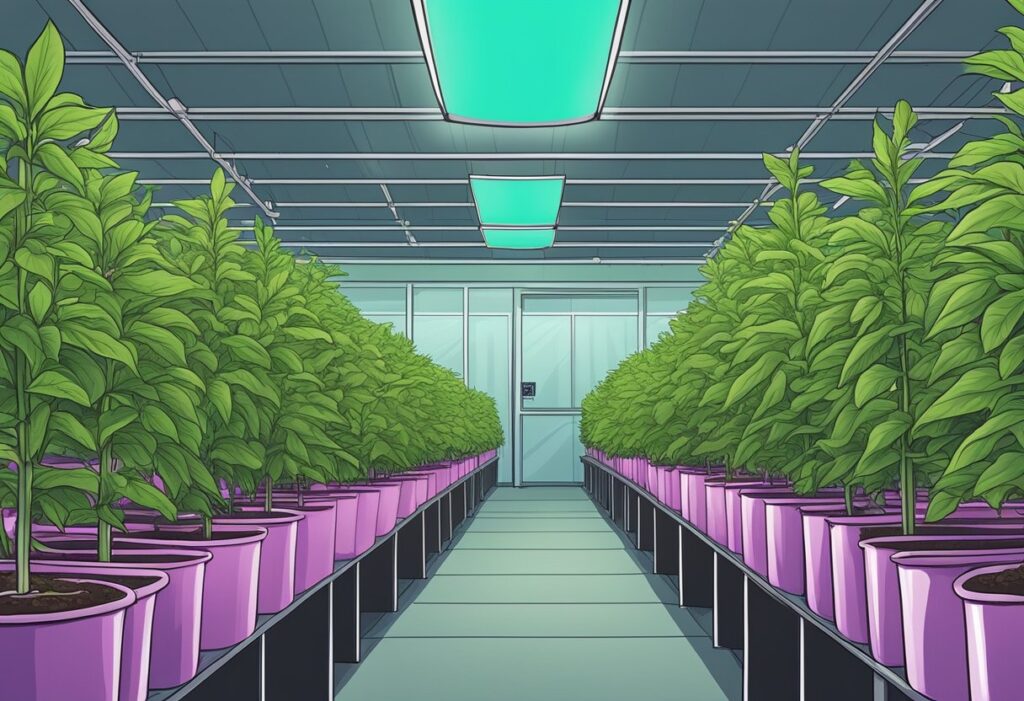
As you embark on cannabis cultivation in Canada, it’s crucial to grasp the unique attributes of autoflower cannabis. This section ensures that you fully understand these varieties, from their genetic makeup to the specifics of their growth cycles.
Autoflowering cannabis strains are notable for their resilience and speedy development, primarily derived from Cannabis ruderalis genetics. These strains naturally start flowering after a set period, regardless of light exposure. Unlike photoperiod strains, autoflowers do not rely on changes in light cycles to transition from the vegetative growth to the flowering stage. This trait makes them ideal for Canada’s climates, where summers are shorter and light conditions are less predictable.
Key Features of Autoflowers:
When you’re selecting autoflower seeds in Canada, it’s important to understand the difference between these and other types of cannabis strains like Indica and Sativa. Indicas typically offer a deep, relaxing high and have a shorter, bushy stature. Sativas, on the other hand, are known for a more energetic effect and a taller growth habit. Autoflowers usually inherit the ruderalis plant’s small stature, and breeders often hybridize them with indica or sativa strains to create varieties with a mix of features, including differing levels of THC and CBD.
Comparison Chart:
| Trait | Autoflower | Indica | Sativa |
|---|---|---|---|
| Flowering Trigger | Age | Photoperiod | Photoperiod |
| Average Size | Compact | Short & Bushy | Tall & Slender |
| THC/CBD Levels | Varied | Usually High THC | Usually High THC |
The life cycle of autoflowers is segmented into two main phases: germination and flowering. After germination, autoflowers quickly transition to flowering, bypassing a long vegetative phase. Cannabis breeders have refined autoflower strains to ensure that they still develop dense, resinous trichomes similar to their photoperiod counterparts. Despite their brief lifecycle, autoflowers can produce potent buds rich in cannabinoids, appealing to both novice and experienced cultivators in various environmental conditions.
For traditional photoperiod plants, the change from vegetative growth to flowering is induced by altering the light exposure to mimic the seasonal change in daylight. Autoflowers eliminate this need, simplifying the growing process, as you don’t have to modify light cycles. Here’s what you need to know about their growth preferences:
With these basics in hand, your journey into growing autoflowers in the diverse Canadian climate can begin with confidence, understanding the distinct advantages these hardy plants offer.

To maximize your autoflower yield, precision in every aspect of cultivation is vital. From the lighting to the soil you use, paying attention to the nuances of these plants will reward you with significant results.
Indoor Cultivation: For growing autoflowers indoors, maintaining a consistent environment is key. Your autoflowers will flourish under full-spectrum LED lights, which provide the necessary light exposure without overbearing heat. Aim for a temperature range of 70-85°F (21-29°C) and a humidity level between 40-60%. This ensures a stable environment that mimics natural conditions for autoflowers.
Your auto-flowering plants’ output is directly linked to their nutrient intake. Start with an optimal pH level of 6.0-7.0 in your soil or hydroponic solution, which allows for maximum nutrient absorption. Implement a nutrient regimen that offers a balance of macronutrients like Nitrogen (N), Phosphorus (P), and Potassium (K), and essential micronutrients. Adjust your feeding to suit the growth stage; the vegetative phase requires higher nitrogen, while flowering demands more phosphorus and potassium.
Finally, the harvest time is a definite make-or-break phase for your autoflowers’ potency and flavor profile. Watch for the trichomes on your plant to turn from clear to milky. This indicates peak THC levels, signaling it’s time to harvest. Post-harvest, drying and curing are just as important as the grow itself. Dry your plants slowly in a controlled environment and cure in jars, opening them periodically to manage humidity and maximize the flavor and potency of your yield.

When growing autoflower seeds in Canada, you’ll need to overcome various growth challenges to secure a healthy harvest. This includes managing pests, diseases, and environmental stressors, adapting to the unique Canadian climate and seasons, and carefully managing your soil and grow mediums.
Your autoflawers can be vulnerable to pests and diseases, making it crucial to avoid these before they impact yield. Regular maintenance is key, which includes inspecting your plants for signs of infestation or disease. Employing natural predators such as ladybugs can be an environmentally friendly method to control certain pests. As for diseases, ensuring good air circulation and maintaining appropriate humidity levels—between 50-60% during the vegetative stage and slightly lower during flowering—will help prevent outbreaks.
Environmental stressors like temperature fluctuations can stress your plants. Autoflowers prefer a stable environment with temperatures ranging ideally from 68-77°F (20-25°C). Using tools like thermostats and digital readers helps maintain consistent environmental conditions, essential for optimal plant development.
Canada’s climate poses unique challenges due to its cold and lengthy winters. Nevertheless, autoflowers have a quick turnaround, allowing you to plan multiple grow cycles in a year, even during short summers. When growing outdoors, it’s critical to monitor the weather closely and be prepared with protective equipment like cold frames or greenhouses to shield your plants from unexpected late frost or chilling winds.
Indoor growing environments provide more control, but if energy conservation is a concern, align your grow cycle to capitalize on periods of natural sunlight to reduce reliance on artificial lighting.
The choice of soil or grow medium can make a significant difference to the development of your autoflowers. A light and airy growing medium that is rich in nutrients like phosphorus and potassium, especially during the flowering stage, is essential. It’s also important to maintain the pH levels of your soil between 6.0 and 7.0 to facilitate optimal nutrient uptake.
Consistent watering practices are necessary, but avoid overwatering—allow the top inch of the soil to dry out before watering again to ensure adequate moisture without waterlogging the roots. Employing methods like low stress training (LST) can also promote better light exposure and air circulation, helping your plants use energy efficiently and boosting yield.
For autoflower cannabis plants, you’ll want to maintain outdoor temperatures between 70-85°F (21-29°C). This range ensures your plants can photosynthesize efficiently without heat stress.
You should harvest your autoflowers once the majority of trichomes have turned from clear to milky white. This typically occurs about 10 weeks from seed, but you’ll need to observe your plants, as timing can vary.
Strains like Northern Lights Autoflower, Amnesia Haze Autoflower, and Blue Dream Autoflower are known for hearty yields and resilience to Canada’s varying climates. They adapt well and deliver abundant harvests.
Absolutely. Choose a well-draining soil with a pH of 6.0 to 7.0. Plant your autoflower seeds in Canada directly in the final pot to avoid transplant shock, and avoid over-watering to encourage strong root development.
Lollipopping, or pruning the lower branches, directs your plant’s energy to the top foliage and buds exposed to more light, potentially improving yield and reducing the risk of mold.
We ship and deliver world wide via USPS and various couriers.
We offer a wide range of secure and anonymous online payment options.
We care about you, our customer. Please contact us with any questions or concerns.
Find out more about the benefits of being a loyal and regular customer.
WE ARE EVERY GROWERS ONE STOP SHOP TO ACQUIRE PREMIUM CANNABIS SEEDS FOR SALE IN THE USA, CANADA AND AUSTRALIA

Farmers Lab Seeds 2024, | All Right Reserved
Seeds are sold as novelty items, souvenirs, and collectibles. They contain 0% THC. We encourage our customers to check the legislation in their Country, State, Province, and Municipality prior to purchasing items from our store. We do not provide growing information.
All seeds are sold as hemp, and lab tested under 0.3% THC. This product is not for use by or sale to persons under the age of 21. This product should be used only as directed on the label. It should not be used if you are pregnant or nursing. Consult with a physician before use if you have a serious medical condition or use prescription medications. A Doctor’s advice should be sought before using this and any supplemental dietary product. All trademarks and copyrights are property of their respective owners and are not affiliated with nor do they endorse this product.
These statements have not been evaluated by the FDA. This product is not intended to diagnose, treat, cure or prevent any disease. Individual weight loss results will vary. By using this site, you agree to follow the Privacy Policy and all Terms & Conditions printed on this site. Void Where Prohibited by Law.